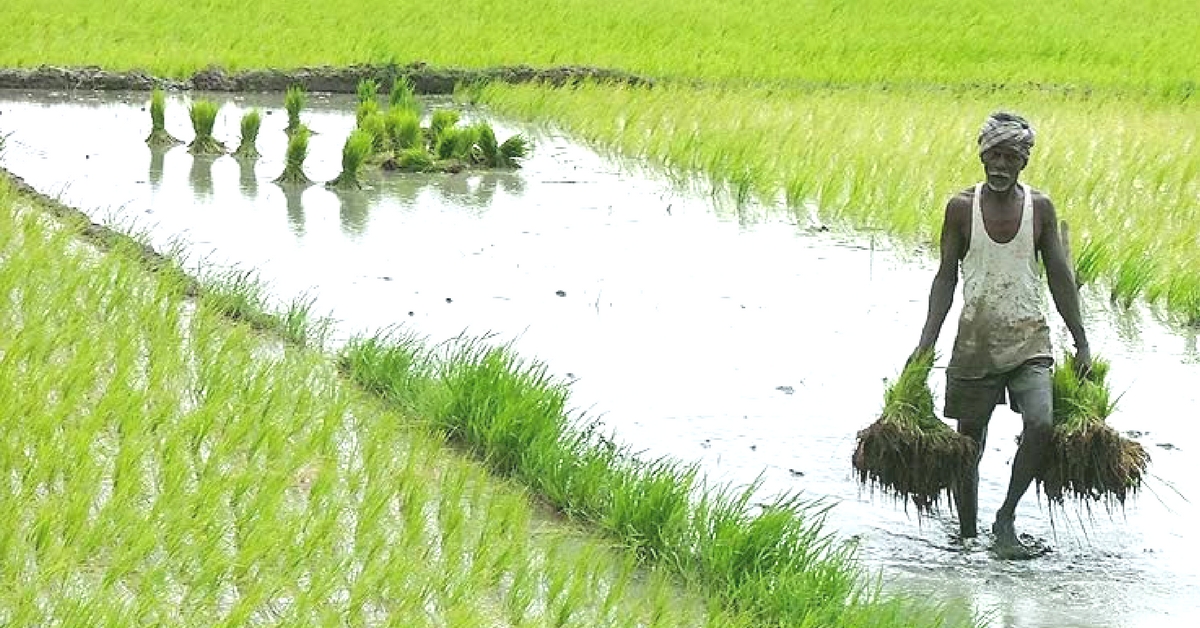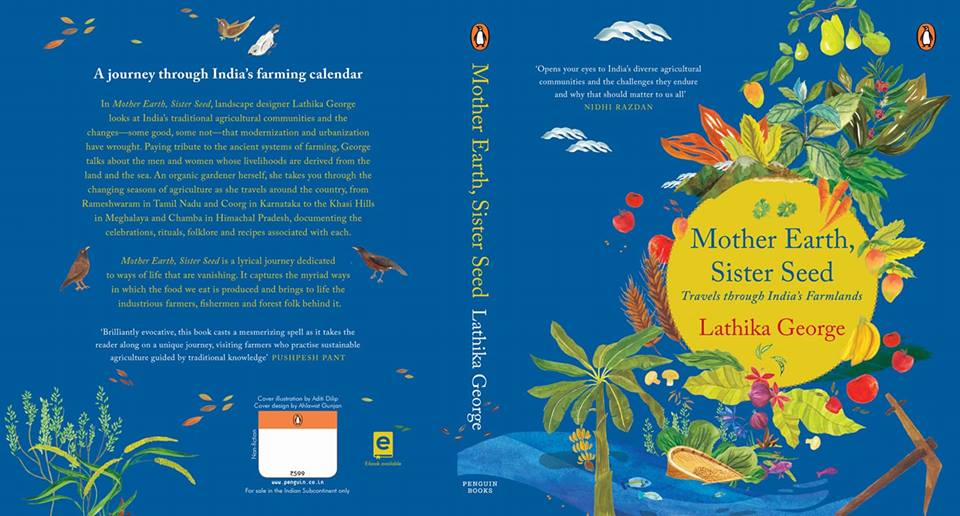This Organic Gardener Journeyed Across India’s Farms & Discovered These Secrets!
In Mother Earth, Sister Seed we travel along with the writer and hear stories from the Khasi Hills of Meghalaya, the Bija Vidyapeeth in Uttarakhand and farms in Wayanad among a smorgasbord of other places, some well-known, some a new realization.

If someone ever told me that a book on Indian agricultural practices would talk about traditional garbas of agrarian and pastoral communities, I would have had my doubts. But Lathika George manages to do just that in her book Mother Earth, Sister Seed: Travels through India’s Farmlands. By weaving travel, customs, traditions, festivals, recipes and agricultural practices together, the author creates a vivid collage of places and faces holding on to ways that have stood the test of time. Lathika George is a landscape designer, writer, and an organic gardener herself. In Mother Earth, Sister Seed, we travel along with the writer and hear stories from the Khasi Hills of Meghalaya, the Bija Vidyapeeth in Uttarakhand and farms in Wayanad among a smorgasbord of other places, some well known, some new realisations.
Over a phone call, Lathika George spoke about writing this book encompassing her journey of four years through India’s farmlands.

This is Lathika George’s second book. Her first book, The Suriani Kitchen (published as The Kerala Kitchen in New York) celebrates the cuisine of the Syrian Christian community in Kerala. So how did the journey of Mother Earth, Sister Seed begin?
“I started learning about natural methods of gardening from books and journals. My landscape clients were increasingly asking about organic kitchen gardens. The books were informative, but they were mostly textbook knowledge. I stay in an area where there are a lot of farms, so I started visiting them. I realised that this is where the real learning was. This was how food was meant to be produced. I have family and friends who are also into farming, and I have been visiting farms for many years. I wanted to share the information I had gathered, but more importantly, I wanted to take the reader along on my journey,” says Lathika.
She adds that it is also useful to understand the many facets of agriculture in our country. “I found that most people have this grim image of farming. It’s important that we focus on the issues, but we also need to find out what went wrong. Many of the agricultural communities which are facing distress now, were once traditional communities. It’s important to know how they moved away from that, and compare that to communities that continue to follow old methods for various reasons.”
Picturesque views, produce that brings a sense of envy, recipes from farmhouse kitchens, personal stories of struggle, celebrations, festivals, poems, singing and dancing – Mother Earth, Sister Seed is a bit of everything in this agricultural life.

“There is no one picture of Indian farming; the diversity is stunning. You don’t know where to start and what story to tell. One thing I wanted to avoid was statistics. Farmers are often described in numbers, and there are no personal stories out there. I wanted to make the book about their narratives,” Lathika shares.
Mother Earth, Sister Seed also highlights the role of women in agriculture. Whether it is helping their families in gathering honey in the forests of Sunderbans, deciding what to grow when, or their role in preserving seeds—the book shows us how they are an essential part of many agricultural activities.
“In my mind, when I think farmer – I think women. In the Khasi community of Meghalaya, it is entirely women who are running the show, and the rights are with them. Women play the role of a seed collector in this community, which is the most important role in farming life. Even in Goa, among the fishing communities, the women are the decision makers. Also, in a lot of places men have to go out and find other work, whereas the women stay behind and look after the land,” says Lathika.
When the author visited Sikkim, she writes about how the state used minimal pesticides and fertilisers even before they committed to going completely organic, and homestead farming still forms the basis of their agriculture.
“Farming was never solely about work and maximum profits, but a traditional way of living,” she writes in her book.

Despite having this state as a stellar example, Lathika says in Mother Earth, Sister Seed- “there’s work to be done. Like farmers everywhere, there are issues of fair prices and efficient marketing.”
“As an organic state, Sikkim is successful. Everybody is producing this wonderful organic food in Sikkim, and that’s all I ate over there. Now that they have a surplus, where will it go? For that, they need proper infrastructures, such as refrigerated vans, and storage facilities to make the produce available to wider markets. Imagine these are superior products like oranges, spices, rice, vegetables- all organic. They have to reach the market, and the farmers need to get a fair price for it. They are happy with the quality of life and the way things are, but there is a sense of dissatisfaction. There is a general feeling that I have worked so hard, and this is all I get in return. Many even consider moving to cities thinking life will be better for them there. The situation has to be fixed as soon as possible so that Sikkim can continue doing what it has achieved with so much hard work”, says Lathika.
Throughout the book, we see examples of natural methods, specific to communities and regions providing solutions to agricultural problems.

In the Divar Island of Goa, farmers use manure made of ash, plant, fish waste and cow dung. Rice seeds in some places are treated with neem cake for resistance, and in the fields of Sikkim, natural weed suppressors like buckwheat and sorghum are grown. Knowledge handed down by generations and generations of farmers is slowly being lost in translation. But as Lathika writes in her chapter “New Age, Old Ways” the new generation of farmers are finding ways to bring the better of these two worlds together – traditional knowledge and modern technology.
“Young farmers who are going back into agriculture realise the wealth of knowledge that India has. They understand that resources for each region have evolved based on the region’s needs. Many of the earlier water systems, designed to provide water to the right places are not even in use now. They can be revised and reused. These are what new farmers are looking into, and they are supplementing it with appropriate technology. One thing you will notice is that many of the farmers who practice this kind of farming need very little from the outside. They are self-sufficient, and often people don’t hear about them”, Lathika adds.
“I came away considering his words, and the words of other farmers I have met on my journeys to the country’s diverse farmlands. These are people who have fought hard for their right to tread softly on the earth. Perhaps in these self-contained little worlds, small and complete ecosystems rich in biodiversity, lies the solution to healing the grievous harm done to the earth.” – Lathika George- Mother Earth, Sister Seed; Travels through India’s Farmlands
Biodiversity, resource management, proper planning, safe and healthy food- the answers we are seeking seem to be all around us, and sadly vanishing with neglect. Mother Earth, Sister Seed reminds us that it might be time to take stock of these solutions and look at ways to implement them beyond these pockets.
“A large percentage of Indian agriculture is smallholder families. They are following traditional agricultural practices, either because they cannot afford these chemical products, or are suspicious of newer methods, or they don’t want to. For many it’s not just about growing food, it’s a sustainable way of life. Naysayers will ask “is there really happiness in farming?” Of course, there is. But if we want people to continue doing this, and transition more farmers into this way of life, we need to encourage and support them and provide returns worthy of their efforts.”
You may also like: With Over a Lakh Books, This Septuagenarian Couple’s Library Is Worth a Visit!
Lathika goes on to add that supporting this change for the better in agriculture doesn’t mean that we all need to begin farming actively. We can also show support by purchasing organic produce from our local farmers. We can build apps and create support technologies for farmers wanting to start or make the transition. Green thumb or not, the author does emphasise that we should all start a kitchen garden and grow something. “If at all, it will show you how hard it is to grow food, and how much it means to you.”
Mother Earth, Sister Seed is published by Penguin Books.
The conversation has been edited for length.
(Written by Sharmila Vaidyanathan. Edited by Shruti Singhal)
Like this story? Or have something to share?
Write to us: [email protected]
Connect with us on Facebook and Twitter.
NEW: Click here to get positive news on WhatsApp!
If you found our stories insightful, informative, or even just enjoyable, we invite you to consider making a voluntary payment to support the work we do at The Better India. Your contribution helps us continue producing quality content that educates, inspires, and drives positive change.
Choose one of the payment options below for your contribution-
By paying for the stories you value, you directly contribute to sustaining our efforts focused on making a difference in the world. Together, let’s ensure that impactful stories continue to be told and shared, enriching lives and communities alike.
Thank you for your support. Here are some frequently asked questions you might find helpful to know why you are contributing?


This story made me
-
97
-
121
-
89
-
167













